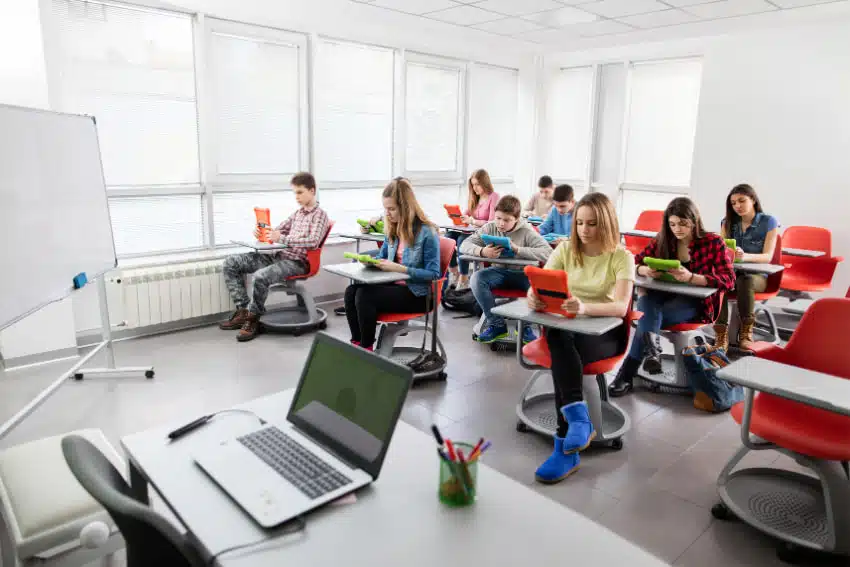
7 Questions to Assess the Health of Your Surveillance & Security Technology
Your surveillance and security systems are only as strong as their weakest component. Outdated hardware, unsupported software, or a lack …

In our latest examination of the digital divides from the US Department of Education’s 2024 National Educational Technology Plan (NETP), we focus on the third but probably best-known type of digital divide: Digital Access. In case you missed them, see Part 1 and Part 2 of this blog series first.
The Digital Access Divide addresses the unequal technology and Internet access in education. This divide poses a major challenge, as it can severely impact students’ ability to participate fully in the ever-increasingly more tech-heavy educational environment.
A lack of access can lead to widening educational inequalities, where some students fall behind their peers simply because they don’t have the same basic tools at their disposal. Factors contributing to this divide include socioeconomic status, geographic location, and school resources.
Our goal in addressing this gap is to ensure that every student is equipped with the essential education technology to thrive in a rapidly evolving digital landscape. It requires a multifaceted approach involving investment in infrastructure, equitable distribution of devices, and community support. Schools, educators, and policymakers must work together to create an environment where every student can thrive.

The NETP defines the Digital Access Divide as “the unequal distribution of access to digital technologies, such as computers, the internet, and other digital tools, between historically marginalized learners and their peers.”
Previously, the term digital divide referred predominantly to the disparity between schools and districts that have Internet and technology access and those that don’t. Progress has been made—99.3% of American schools now have high-speed Internet due to programs such as E-rate. Due to COVID and the resulting funding, over 84% of K-12 students have one-to-one access to devices at school. While the Digital Access Divide has certainly narrowed, it still exists due to inconsistent home connectivity and disparities in the availability of advanced digital tools at school.
To address the Digital Access Divide, we must first examine and improve the systems that provide consistent and equitable access to technology and high-speed Internet for all students. Most schools have Internet and reliable devices, but how can those schools continue to provide those to students when the initial funding has run out? It’s also crucial to ensure that students have access to a diverse range of digital tools and resources. This exposure is essential for preparing them effectively for life after school and for navigating an increasingly complex digital world.

| US Department of Education Recommendations | How S3 Technologies Can Help |
| Develop a “Portrait of a Learning Environment” to set expectations around habits and abilities no matter what the space. | S3’s EdTech team stays up-to-date with the latest technology available for schools. We assist schools in prioritizing purchases and designing classrooms that foster the development of essential tech-focused skills for students. |
| Conduct regular needs assessments to ensure technology properly supports learning. | We believe technology is best integrated with an end goal in mind, not just for the sake of using technology. S3 can help schools identify those goals, take stock of what’s needed to reach them, and assist with implementing the tools effectively. |
| Develop model processes and guidelines for device refresh policies based on local funding structures. | It can be a complicated process to stay on top of device end-of-life dates and what needs replacement when. S3 can assist in managing those processes and guide purchasing decisions to make the most of funding sources. |
| Plan for and incorporate skills and expectations across all grade levels and subject areas for Digital Health, Safety, and Citizenship and Media Literacy. | With access to tech comes a need for education on safety and best practices. S3’s EdTech team can help identify essential skills that need to be taught in classrooms and develop tailored lessons and curricula to effectively teach those skills. |

Addressing the Digital Access Divide requires a commitment to ensuring all students have reliable access to technology and high-speed Internet. At S3 Technologies, we understand the challenges educators face and are dedicated to supporting schools in bridging the digital divide in access to technology.
We assist schools in developing technology plans to be prepared when devices reach the end of life so that one-to-one access can continue after the initial funding surge. We also help schools stay updated on current and emerging technology so that they can assess what, besides Chromebooks, the students should be using. S3 Technologies empowers teachers to use technology effectively, ensuring all students benefit from a connected learning environment.
Call (330) 648-5408 today to learn how S3 Technologies can support your school in achieving its educational technology goals.
Check out Part 4 here, where we dive into the Technology Integration Matrix, the Technology Uses and Perceptions Survey, and how they can benefit your school.

Your surveillance and security systems are only as strong as their weakest component. Outdated hardware, unsupported software, or a lack …

School safety has never been more important. In an era where timely and effective communication can make all the difference, …

These days, school video productions have become commonplace. Most students own smartphones with cameras, many editing programs are free, and …

“What technology should I buy for my school?” It’s a common question among teachers and administrators—and with good reason. Educational …